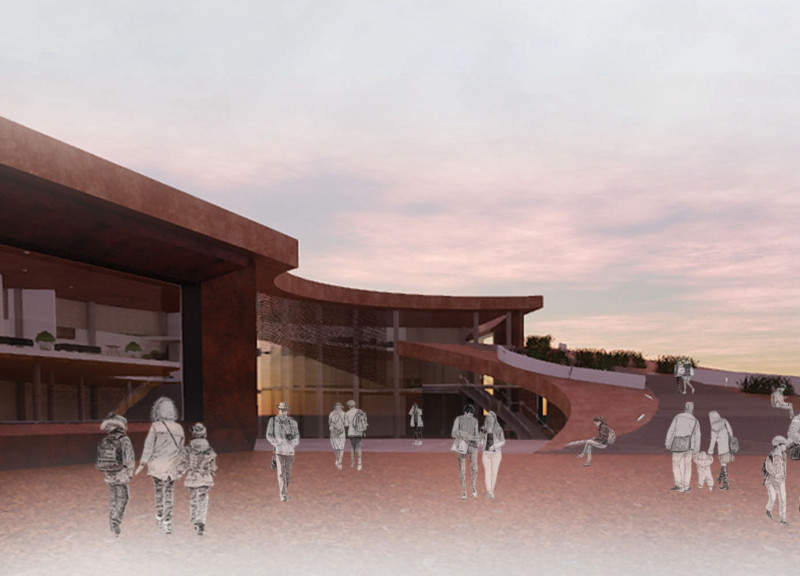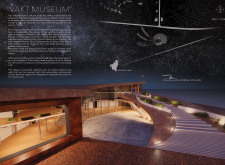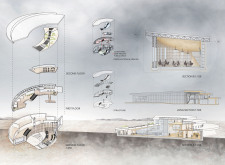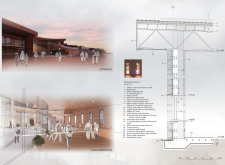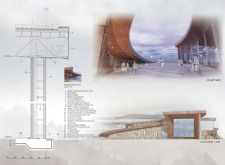5 key facts about this project
The Vakt Museum is located by Iceland’s Hverfjall Volcano and Myvatn Lake. It is designed to educate visitors about the region's volcanic history. The design captures the essence of how volcanoes evolve, reflecting their changing forms. The museum aims to create a strong connection between its architecture and the surrounding landscape.
Design Configuration
The building consists of two distinct sections that create a central courtyard. This division serves practical purposes while also enhancing the visual appeal of the structure. Natural light flows comfortably into the museum, creating a welcoming atmosphere along the pathways.
Visual Engagement
Large windows provide views of Myvatn Lake and Hverfjall Volcano. These openings bring the outside in, allowing visitors to engage with the landscape. The careful positioning of windows fosters a relationship between the exhibits inside and the geological wonders outside.
Spatial Organization
Inside, mezzanine floors house office spaces and establish visual connections across three levels. This layout encourages movement and interaction among visitors. It invites exploration of both the exhibits and the building itself, promoting a lively atmosphere.
Materiality
Material choices are essential to the museum's narrative. Volcanic gabion rock walls are sourced from the surrounding landscape, grounding the design in its setting. Corten steel is used to suggest the color and texture of volcanic lava, while copper elements enhance the thematic connection to the natural environment.
As visitors descend into the central courtyard, they are met with a series of steps designed to evoke the feeling of entering a volcanic crater. This thoughtful approach reinforces the museum's mission to connect people with the powerful forces of nature shaped by volcanic activity in Iceland.


